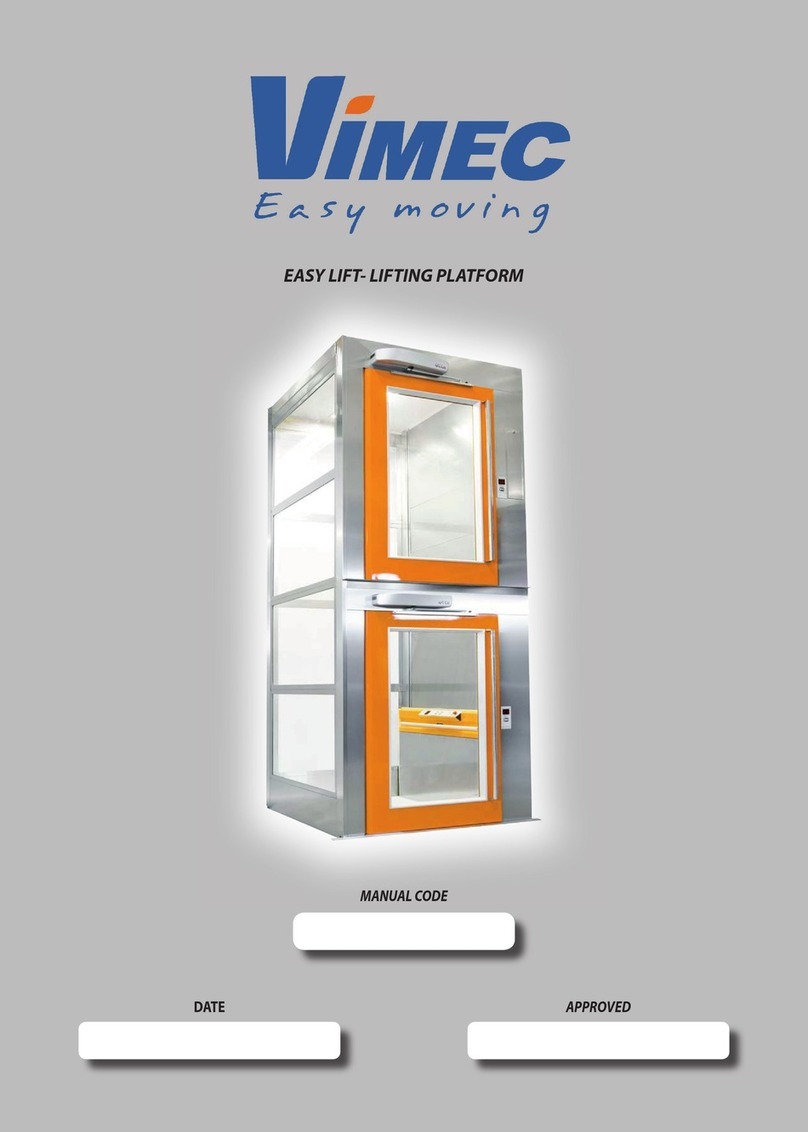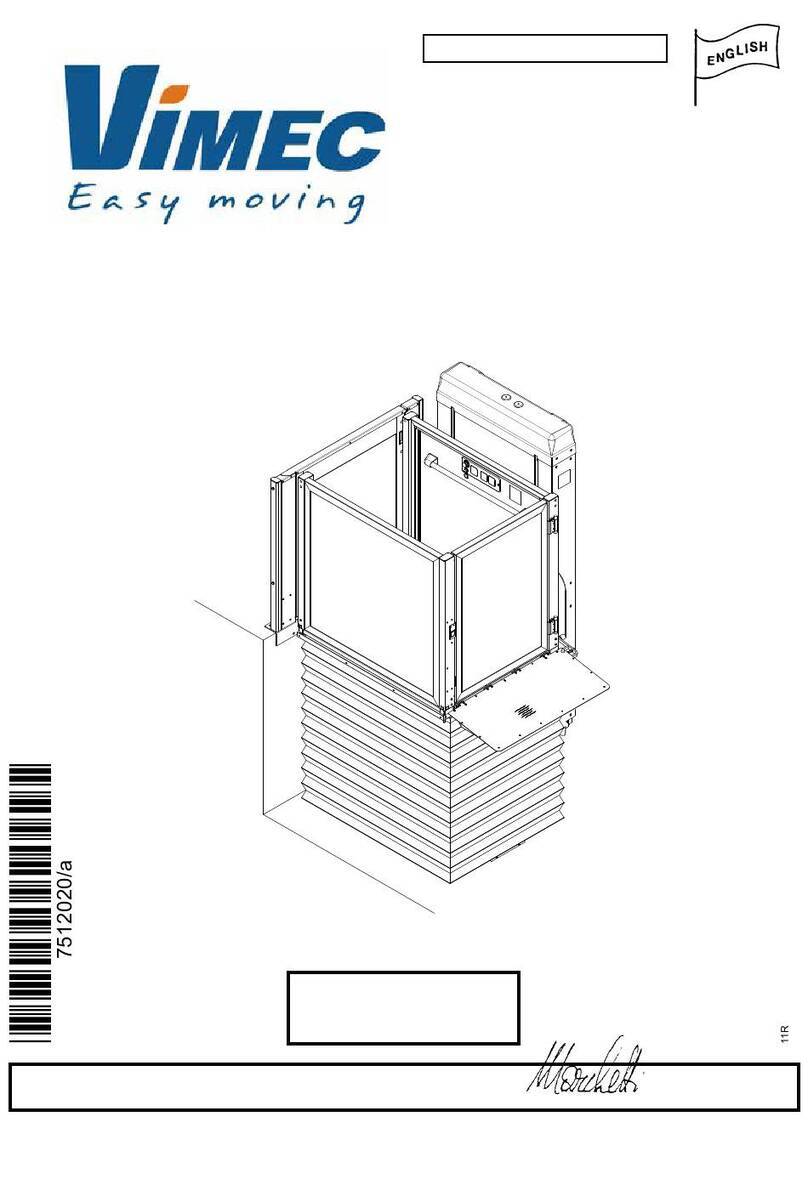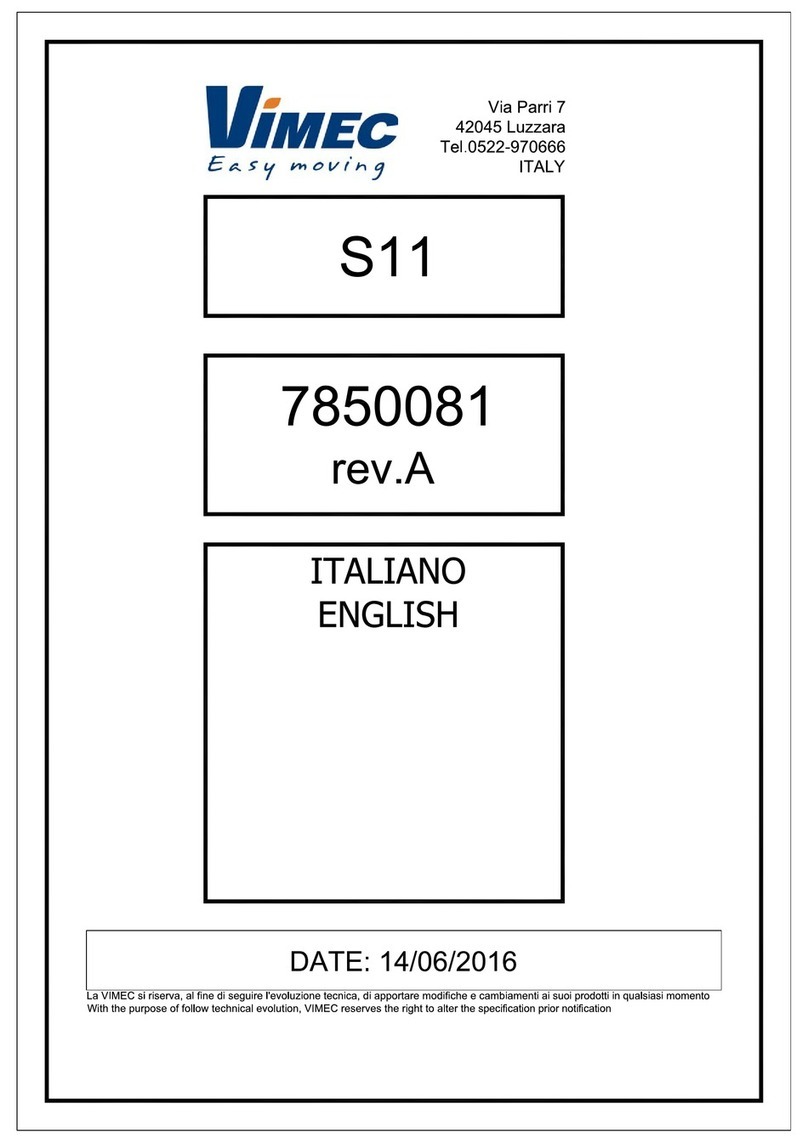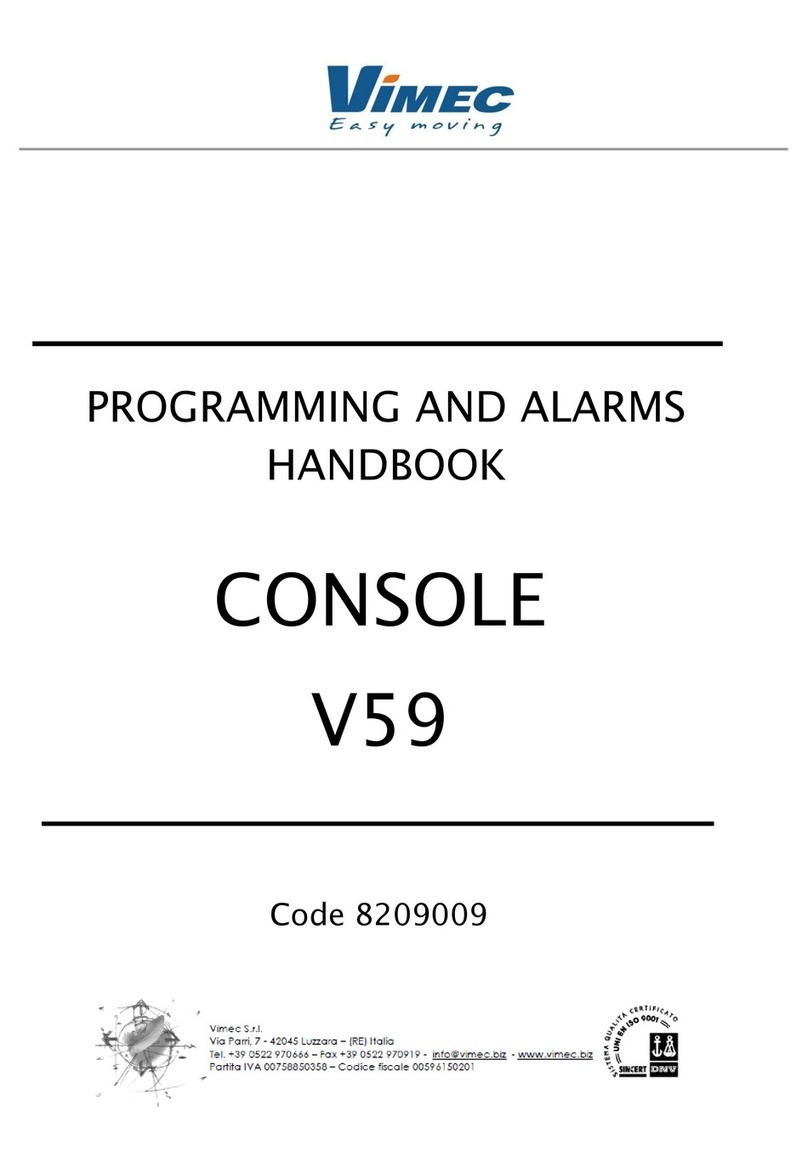
8
a
a
b
b
7511001
6) PREPARING THE LIFT FOR OPERATION
6.1) Electrical panel and installation
The customer is required to make all necessary mo-
difications required to the stairwell (before deliv¬ery),
providing a water drain in outdoor installations if requi-
red, and also to arrange for the handling of the parts
delivered.
The customer is also responsible, at his own expense,
for construction of the dedicated electricity supply line
to our panel, with conductors having gauge of at least
2.5 mm2 and differential security circuit breaker with
rated load 16A and sensitivity 0.03A installed in a box
with padlock fixture close to the unit control panel,
having IP54 protection and earthed by means of 2.5
mm2 cable. All expenses for making-good after instal-
lation and any testing procedures shall also be for the
customer’s account.
The Customer shall ensure lighting of at least 50 LUX
for the landings and lift platform, with switch adjacent
to the platform.
Automatic emergency light in lift shaft 1Wx1 hour, 24
VDC emergency alarm with independent power supply
to be connected to the circuit (emergency button).
The customer shall be responsible for ensuring the
strength and finishing of walls where necessary (dise-
mbarkation side).
The customer is also responsible for ensuring the
strength of the floors.
N.B.: Data are guideline and not binding.
The manufacturer reserves the right to make any chan-
ges it considers appropriate.
7) CORRECT USE OF THE PLATFORM LIFT
WARNING: READ THIS MANUAL CAREFULLY
BEFORE USING THE PLATFORM LIFT.
7.1) Start-up
- The platform lift is started up by simply powering up the
control panel, after connecting all the cable sheaths
between the unit and the gate.
- The lift can be left constantly powered up.
Checks to be performed before using the
platform lift:
Skill level required: O - Trained operator
Frequency: Before use
7.2) Check that the load to be lifted does not exceed
the payload stated on the nameplate and is evenly
distributed over the platform surface.
FIG.5
7.3) Ensure that the load is stable.
7.4) Check that there are no foreign bodies underneath
the platform.
7.5) Check that the platform is not working in a
hazard¬ous environment (dust, salt, flammable or
explosive substances).
7.6) Controls at the floors
The control panel on the gate or the rear of the unit
contains the following devices (Fig. 5):
- Control board master key-switch (Fig. 5/a).
- Call button (Fig. 5/b).
7512001
































